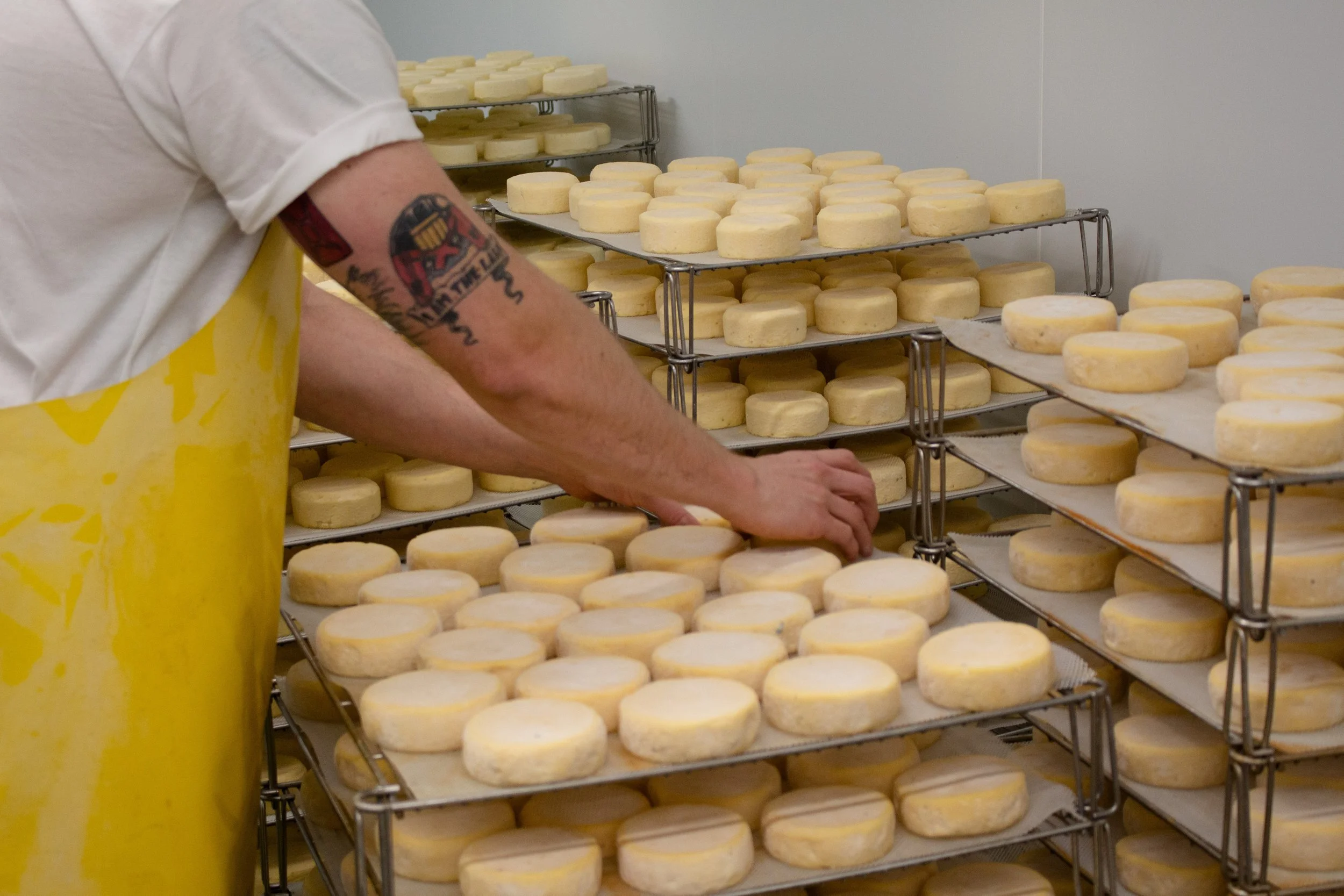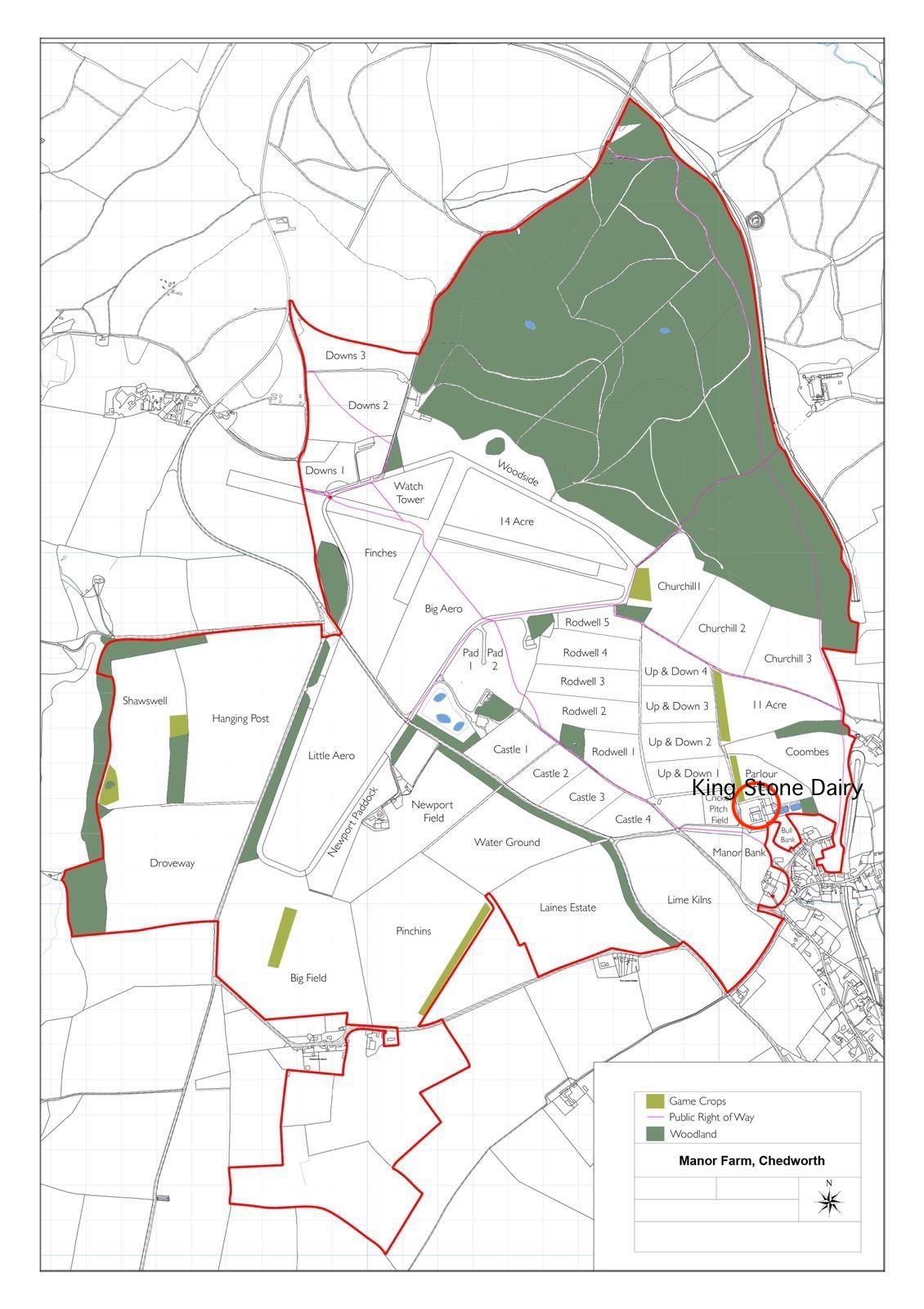From the Farm
After what has felt like a particularly protracted, and at times quite difficult winter, we could not be happier to finally see Spring.
The Autumn calving herd spent winter on the feed pad - a large area bedded with straw and enclosed with 2–3-meter high earth embankments, but with no roof. Cattle up here must be hardy. The feed pad is at the very top of the farm on an old Second World War Airfield, 800 feet above sea level. We are at the head of the Chedworth Valley. The winter weather picks up speed across the Vale of the White Horse, or the Severn Estuary, a little further to the West, and is funnelled up the Valley and hits us square on. It is a beautiful spot, but in the crux of winter has a bleakness, and an unforgiving nature.
The Spring calvers took their break on Newport Field, on the Western side of the farm before calving commenced in the second part of February.
The Spring calving is now done, and we’ve a bit under 200 cattle in the milking herd now, and a fabulous host of rambunctious young calves growing well, which will be joining the milking herd in the future. The oldest are about to be weaned from their formula and let out on the Downs. A nice part of the farm scattered with ancient Oak trees; it has a park-like feel about it.
The milkers were let out to grass on the 16th March, There wasn’t necessarily all that much grass growing and what there was was supplemented by fodder beet during the daytime, and a blend of lucerne, herbal lay and maize silages in the evening back on the pad, but it was a joy to see them out on the green.
The following week they were on Up & Down, Here the grass was a bit ahead, and perhaps it was through rose-tinted spectacles, but it seemed looking at the herd in the afternoon sun, they were starting to shed their winter coats in place of their fine, lustrous summer pelts.
Map of Manor Farm Chedworth with King Stone Dairy at it’s South Eastern Corner.
March’s rain and April’s (mostly!) warmer days has kick started some lovely grass growth and the cows are in good condition and are milking very well. There is, however, a heavy, grey cloud hanging heavily at present: bovine tuberculosis.
On the 10th March, after the routine whole farm test, 27 reactors flagged up. The pain was felt acutely across the whole farm. With the majority of the reactors being in the Spring calving herd, spilt almost perfectly between animals who had just calved, and animals who were days from calving. As well as the inevitable and heart-breaking loss of life, we’d lost a sizable volume of milk due to be going in the tank this Spring and Summer.
Sadly, this is what comes with dairy farming in Gloucestershire, and the constant threat of a tB breakdown is a core reason why we chose to pasteurise the milk for cheesemaking.
With the Spring calving block down in number, we needed some replacements as fast as possible, and being an organic farm, and therefore needing organic cattle, that was something easier said than done. Add in that they needed to be cows for cheesemaking, and robust enough to be put on the outdoor system up here, it seemed a tall order.
Nevertheless, mid-morning on Good Friday, in came a wagon from Somerset carrying 22 DairyShorthorn and Normandie cattle to join the Manor Farm herd, and pending their pre-movement tests, another 30 will be coming up by the end of the weekend.
The current main stays of the herd are British Friesian are Dairy Shorthorn, bolstered with a mix of Montbelairde, Brown Swiss and a couple of Jersey crosses.
We’ve just selected a couple of Norwegian Red bulls which will be used to serve the spring herd, so at this moment, it looks as if the backbone of the herd will be going down a Shorthorn, Normandie, and Norwegian Red routine, which should reap great rewards for cheese yield and quality.
Cheese Updates
It always takes a little time after Christmas to build and adjust our stock levels and consistently has all cheeses being sold at their own target AP, but we’re about where we ought to be now.
Sales across our range have been vigorous over the past 6 or so weeks, and we’re seeing a slight dip in AP of Ashcombe, and so we’ve put a good hundred plus cheeses into the store each week more recently.
Perhaps some of our February Rollrights were a little tight in texture, but a small alteration to our cut size has given us a run of beautifully soft cheeses, with a decadent custard-like texture and mouth filling crème-fraiche flavours.
We’re in a good run of Evenlode at present. We’ve reduced the usual batch size for this cheese by half. From 1000 litres (around 515cheeses) each make down to 500 litres. This enables us to make the cheese more frequently, affording us the ability to a delve a little deeper into the cheese and better understand the key turn point of the make.
Perhaps the cheese of the moment for me right now is Yarlington. Looking back through our make sheets and grading notes, we identified a previously unnoticed inconsistency within the mechanics of the make which correlated perfectly with peaks and troughs of cheese quality, in particularly speed of acidification and drainage in the mould and end texture of the cheese. We’ve now a good 6 weeks of production with that inconsistency ironed out, and we’re successfully locking in our target moisture content and yielding cheeses with a beautifully silken textured paste, and an almost velvet-like geotrichum bloom atop a glowing cider-washed rind.
Nature Notes
For me, making cheese on the farm and the value that brings runs even deeper than the vital daily link to the farming cycle, the dialogue and intimate understanding of the milk from this herd. Working so close to the land allows me a daily interaction with the animal who we share manor farm with.
This winter, atop the Ash, Oak and Yew trees which sit on Manor Bank, directly below the creamery buildings, seemingly as regular as clockwork, soon after sunrise, we a small flock of around half a dozen Hawfinches. Day after day, week after week, they seemed to follow the same pattern, appearing from lower down the Valley, stopping off here for ten to twenty minutes, before flying off north towards the forest. It was a daily treat to watch these large. But incredibly elusive finches.
Every day, around 7am I walk the dog up from the creamery to the airfield before driving the truck and tank to pick up the milk from the parlour. At this time of year it is one of the best parts of the day, with soft, early morning sunlight, long shadows, and a stillness about the place.
We are fortunate to have a vigorous population of Brown Hare here on Manor Farm, and at this time in the morning is always such a treat to see the Does and Bucks go about their courtship rituals. Something missing from much of the English countryside these days. About a month ago, I happened on the first Levert of the season, only the size of an orange, and only just dry.
It was a beautiful sign of the promise of Spring.





